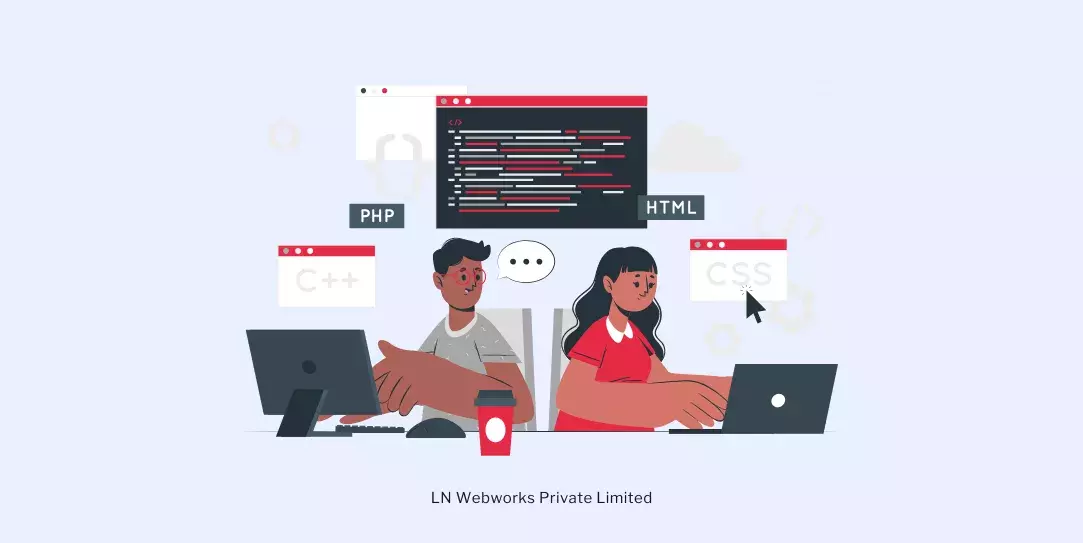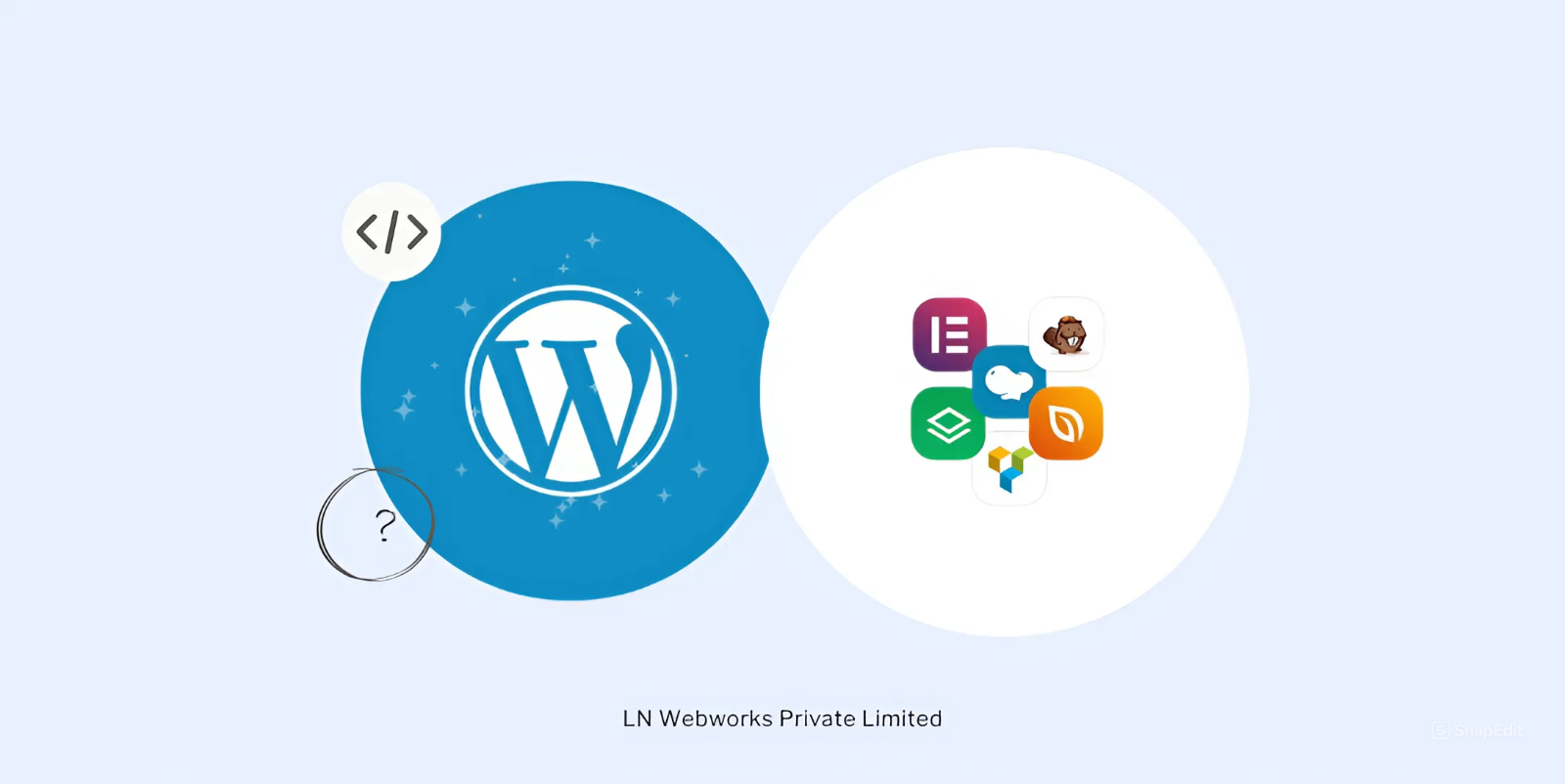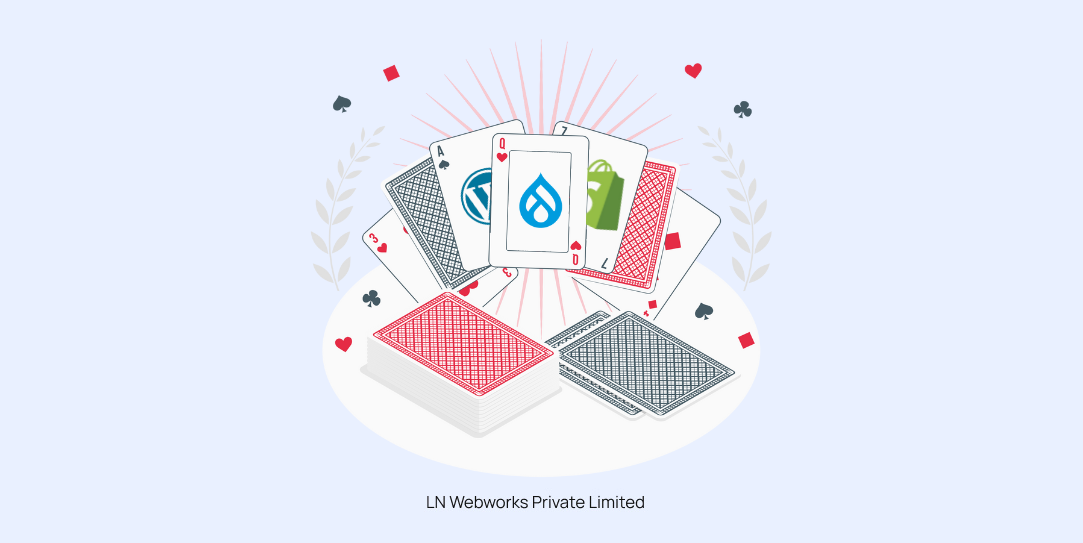Subscribe To Our NewsLetter
Share This Post:
Planning to become a tech wizard who can build web applications from scratch? If this is what you are aiming at, you are in the right place.
To learn the concept of website building you need to understand the concept of full-stack development.
As you embark on this exciting full-stack development journey, remember that every expert was once a beginner. So, give yourself some time, stick to this blog post by scrolling to the bottom, and make the process of building web applications, including both the front-end (user interface) and back-end (server-side logic), easy.
Let's get started and understand full-stack web development in detail!
What is Full-Stack Development?
Full stack development is the process of developing both the front-end and back-end of applications. Front-end, or the client side, includes building an easy-to-navigate user interface and ensuring the website functions properly across different web browsers. Some of its primary components include HTML, JavaScript, and CSS.
On the contrary, the back-end, often known as the server side, handles the application workflows that run in the background, such as processing data, communicating with applications, API development, etc. Some of its common languages include Python, Java, PHP, Ruby, etc.
Thus, full-stack development refers to website or web app development projects that require a single full-stack web developer who can handle both the front-end and back-end tasks. They're the ultimate problem-solvers, bridging the gap between beautiful user interfaces and powerful server logic.
Having said that, full-stack developers include designing, testing, and deploying a website from scratch to end.
Benefits of Full-Stack Web Development
Here are some of the advantages that make full-stack development a must for both developers and businesses alike-
1. The jack-of-all-trades advantage
Imagine a person who can speak multiple languages—this is what full-stack development feels like. It makes you the master of both worlds, i.e front-end and back-end. This versatility provides you with the confidence to handle diverse projects, communicate effectively across different teams, and understand the big picture of software development.
2. Cost efficient
A full-stack developer is hired for all types of projects, eliminating the need for additional developers. The full-stack developers possess all the necessary skill sets, which reduces the need for multiple specialized developers and increases project efficiency and turnaround time.
3. Enhanced problem-solving
A full-stack developer is like a tech detective with a toolkit for every scenario. Their in-depth understanding of the system architecture and know-how of numerous coding languages lets them identify any issues or conflicts that other developers might miss. They also can optimize the entire system, not just the components.
4. Improved creativity and innovation
Because of complete knowledge of all the full-stack coding, tools, and technologies, full-stack developers can provide you with a well-rounded solution with fewer bugs and higher efficiency.
This comprehensive knowledge fuels creativity to design a more intuitive user interface and create innovative solutions that bridge front-end and back-end flawlessly. These professionals are also skilled in database management and debugging.
What Technologies are Used in Full-Stack Development?
A great web application is a result of deploying various technologies, frameworks, and tools while implementing a consistent and logical layout with intuitive navigation. It includes both front-end and back-end development.
Whether it's building dynamic and interactive user interfaces, leveraging robust features, or embracing simplicity and flexibility, full-stack web developers are well-versed in a wide range of tools.
Let's know about these two technologies (front-end and back-end) for full-stack development.
1. Front-end development
Front-end development focuses on the client-facing side of development. It involves creating interactive and visually appealing user interfaces. This process includes everything from designing to how users navigate the website.
This fundamental structure of the website is created using languages that improve the structure, style, and overall visual appeal of the web pages. Here are some of the languages that are used for front-end development-
- HTML/CSS- These languages are the skeleton of your website that provides structure and meaning to your content
- JavaScript- This language breathes life into web pages, enabling dynamic content updates, interactive maps, animated 2D/3D graphics, and more
- TypeScript- This language is similar to JavaScript with additional superpowers, offering features such as static typing, classes, and modules
- React- It allows you to build reusable UI components that manage their own state, making it easier to create complex, interactive UIs
2. Back-end development
Back-end development can be defined as 'behind the scene' magic that powers web applications. It maintains the exchange of information between the front-end and server running the webpage, which users don't directly see but is essential for the functionality of the platform.
It optimizes data processing for faster load times and ensures a seamless user experience even when there is high traffic on the site.
The primary objective of back-end developers is to control what the clients can see and ensure visitors can easily find what they need and have a positive interaction with your site. The developer does this by ensuring that the server is up and running, plus all the other components of the server are functioning properly.
Furthermore, back-end development involves efficient storage and retrieval of vast amounts of information.
Here are some of the languages that are used for back-end development-
- PHP (Hypertext Preprocessor)- It is a powerful tool for making dynamic and interactive web pages
- Ruby- Ruby is an open-source, object-oriented programming language that's used majorly for data processing services, database work, and backups
- Java: It is an object-oriented programming language that can be used to build enterprise software, smartphone operating systems, and applications for desktop, mobile, and the web
- Python: It is a high-level, general-purpose programming language that's compatible with multiple platforms and can be easily integrated with other languages. It can be used to develop software, and its scripts can be used to automate various day-to-day tasks
Which are the Best Full-Stack Development Frameworks?
Full-stack frameworks provide developers with a comprehensive set of tools and libraries to handle both front-end and back-end development seamlessly. Using these frameworks, developers can minimize the time taken to design new applications.
These frameworks offer a reusable set of components such as libraries, compilers, debuggers, and APIs, supporting software security and much more.
Let's, now learn about the popular frameworks that full-stack web developers use-
1. Ruby on Rails
Launched in 2005, Ruby on Rails today is one of the most advanced server-side scripting languages. The highlighting part of this framework is that it facilitates both front-end and back-end development.
It is also known for its Convention over Configuration (CoC) and Don't Repeat Yourself (DRY) principles. This platform comes with all the elements required for creating a website application, such as routing, simplifying database interactions, and promoting clean, maintainable code.
2. Django
Django provides you with a robust, high-level framework that helps developers build websites quickly. It is a python-based web application framework that is a collection of modules that facilitate the process of website building.
This platform provides everything that a developer requires to stay ahead in their industry. Plus, it handles much of the configuration itself, which enables developers to focus solely on application development.
3. Spring Boot
Spring Boot is an open-source Java framework offered by Spring. It is used to create enterprise Java applications that include web-based and micro-services applications. This platform focuses majorly on simplifying the initial set-up and web development process.
It provides a faster way to run both simple and web-based applications. The primary objective of Spring Boot is to minimize efforts in website development, unit testing, and integration test time.
4. Laravel
Laravel is a free, open-source PHP framework with expressive, elegant syntax for building web applications. Its clean and intuitive syntax focuses on making web development tasks faster. It aims to take the pain out of development by easing common tasks used in many web projects.
This platform offers features such as ORM, routing, and authentication, which make web app development and maintenance seamless.
Top 4 Stacks for Full-Stack Development
Listed below are the four tech stacks making full-stack development effortless:
1. LAMP stack
Launched in 1995, today, the LAMP stack powers more than 40% of all websites on the internet. The word Lamp stands for Linux, Apache, MySQL, and PHP as together they make this stack. Its Apache server manages the requests and then transfers the dynamic ones to PHP. After that, PHP interacts with databases if required. Then, it sends the HTML output to Apache so that it can be delivered to the user.
2. MEAN stack
MEAN stack uses JavaScript across the entire application and consists of MongoDB, Express.js, Angular, and Node.js. Here is its functionality- angular processes requests through Express.js, gets the data from MongoDB, and returns JSON data to Angular. Subsequently, it responds to the user in the browser.
3. LEMP stack
LEMP stack uses four open-source technologies, which are Linux, Nginx, MySQL, and PHP. The process starts with Nginx managing the HTTP requests and directing them to PHP for further processing. After that, PHP interacts with MySQL and sends the request back through Nginx to the user.
4. MERN stack
MERN stack is quite similar to MEAN, it just replaces Angular with React. React components trigger API calls to the Express server. Express routes handle these requests, interacting with MongoDB as needed. Data flows back to the React front-end, updating the UI in real-time.
Summing Up
All set to start your full-stack web development journey? Here is how you can make it easy by following these steps:
- Set up your development environment
- Start with HTML, CSS, and JavaScript basics
- Choose a back-end language and begin learning
- Practice, practice, practice!
To make it even more straightforward, you can take the help of a website development company, as with years of experience, they can craft beautiful, functional websites across various industries.
Their website development services are exceptional, as most of them offer round-the-clock support and ongoing maintenance to ensure your digital storefront is always open for business.
Share This Post:
Author Information

Khushboo Arora
Content SpecialistMeet Khushboo Arora, the creative mind behind LN Webworks' engaging and informative blogs! Passionate about crafting content that engages readers and delivers meaningful insights with clarity and ease. When she’s not weaving words, she’s brainstorming fresh ideas to keep LN Webworks’ content game strong.
Talk With Certified Full Stack Web Development Experts Of LN Webworks!
Related Articles
February 6, 2025
WordPress Theme vs Page Builder: Which One Works Better for Your Site?
February 3, 2025
Best Headless ECommerce Platforms In 2025
January 30, 2025



